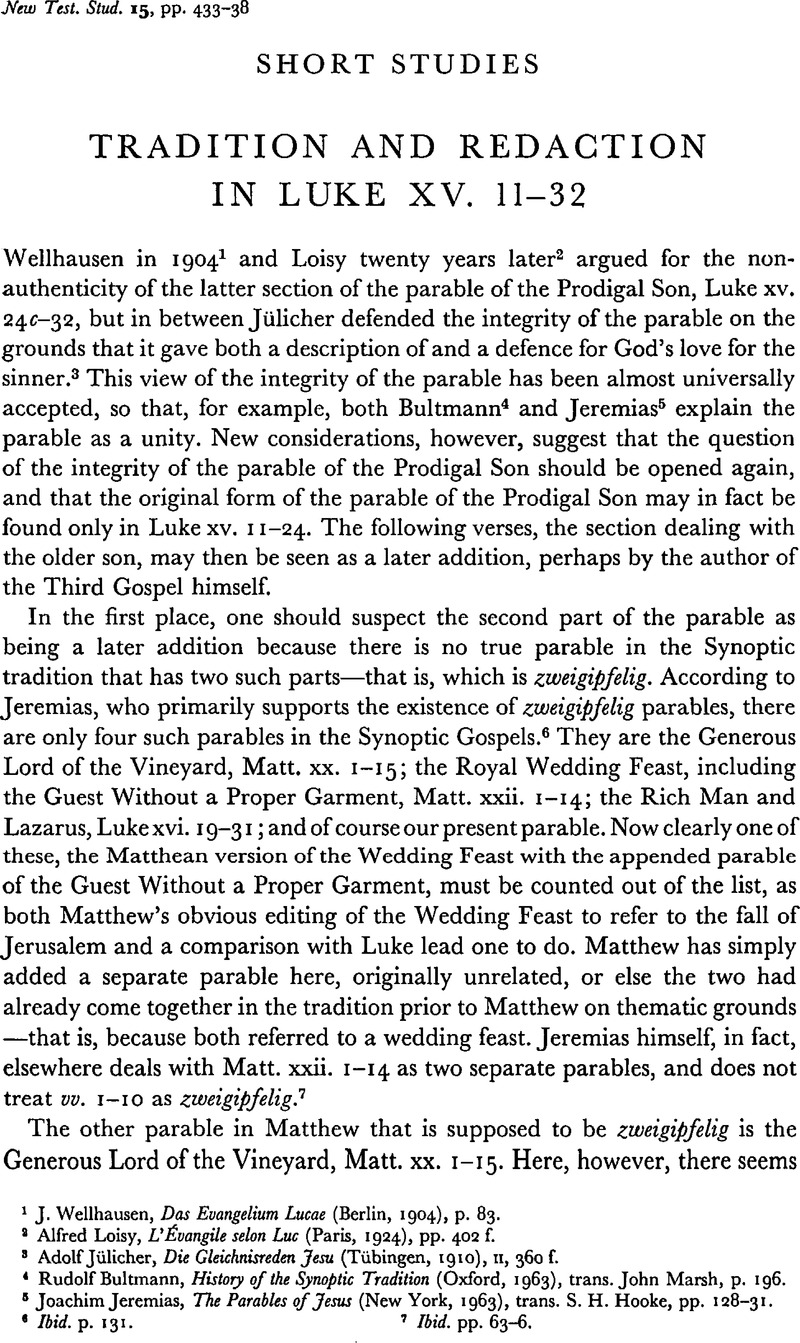Article contents
Tradition and Redaction in Luke xv. 11–32
Published online by Cambridge University Press: 05 February 2009
Abstract

- Type
- Short Studies
- Information
- Copyright
- Copyright © Cambridge University Press 1969
References
page 433 note 1 Wellhausen, J., Das Evangelium Lucae (Berlin, 1904), p. 83.Google Scholar
page 433 note 2 Loisy, Alfred, L'Évangile selon Luc (Paris, 1924), pp. 402 f.Google Scholar
page 433 note 3 Jülicher, Adolf, Die Gleichnisreden Jesu (Tübingen, 1910), II, 360 f.Google Scholar
page 433 note 4 Bultmann, Rudolf, History of the Synoptic Tradition (Oxford, 1963), trans. Marsh, John, p.196.Google Scholar
page 433 note 5 Jeremias, Joachim, The Parables of Jesus (New York, 1963), trans. Hooke, S. H., pp. 128–31.Google Scholar
page 433 note 6 ibid. p. 131.
page 433 note 7 ibid. pp. 63–6.
page 434 note 1 Jeremias, op. cit., pp. 37 f.
page 434 note 2 Jülicher, op. cit. p. 638.
page 434 note 3 Montefiore, C. G., The Synoptic Gospels, 2nd ed. (London, 1927), II, 539.Google Scholar
page 434 note 4 Bultmann, op. cit. pp. 196 f.
page 434 note 5 Jeremias, op. cit. p. 186.
page 435 note 1 Schweizer, Eduard, ‘Zur Frage der Lukasquellen, Analyse von Luk. 15, 11–32’, Th. Z. IV (1948), 469–71;Google ScholarJeremias, , ‘Zum Gleichnis vom verlorenen Sohn, Luk. 15, 11–32’, Th. Z. v (1949),228–31;Google ScholarSchweizer, , ‘Antwort’, Th. Z. v (1949), 231–3.Google Scholar
page 435 note 2 Schweizer, , ‘Antwort’, p. 232,Google Scholar questions that the last is a Semitism, on the grounds that it falls at the first of the clause rather than in the middle, hence meaning merely ‘see’.
page 436 note 1 Evidence: Moulton & Geden and Hawkins.
page 436 note 2 Of the four occurrences in the Gospel, one is from Mark and the other three are in our parable.
page 437 note 1 Schweizer, , ‘Antwort’, pp. 232 f.Google Scholar
- 3
- Cited by




